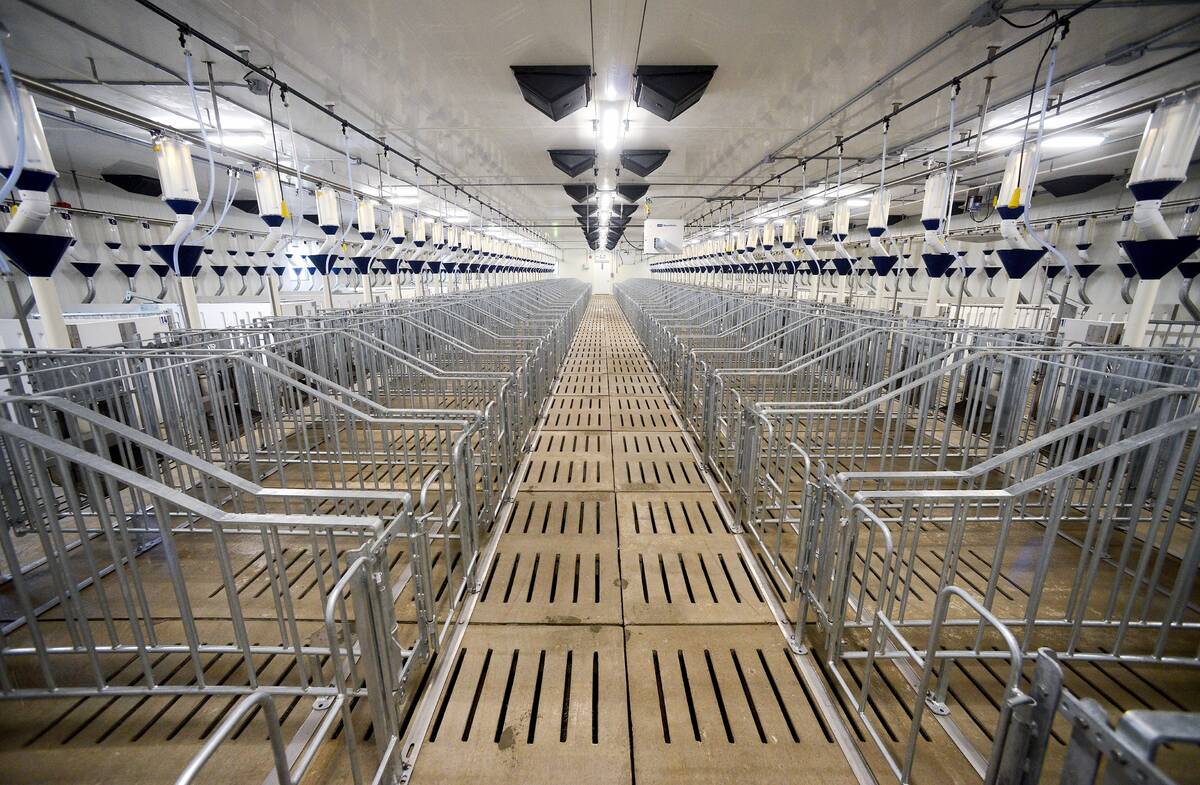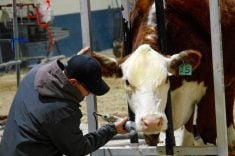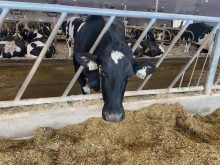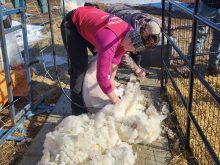A total of 141 sheep and goats was presented at the Winnipeg Livestock Auction’s first sale of 2017 on Jan. 18, as attendees enjoyed spring-like melting weather.
While it’s difficult to predict exactly how the year will unfold, this sale set a positive example for the rest of the year to follow. Buyers were bidding with determination and sellers presented quality animals for sale in all classes. Compared to sales figures a year ago, some classes saw higher values.
- Read more: Lamb co-op files for bankruptcy protection
Read Also

Real farm talk on switching to open sow housing
What actually worked for these Prairie pig farmers when it came time to swap gestation stalls in their barns for group sow housing? What were the results?
The bidding on ewes was strong at this sale and most of the animals seemed to be of good quality. The hair ewes could not reach the price range average, while wool ewes had a price range from $1.48 to $1.50 per pound. The hair ewes brought $1.35 per pound and lower.
There was some decent selection of rams for the buyers, with different features and preferences drawing buyer attention. There was no clear pattern to the bidding, other than the usual feature of heavier-weight rams seeing lower prices. Bidding ranged from $1.07 to $2.07 a pound.
The heavyweight lamb classification was represented by seven 113-pound Clun Forest-cross lambs. A very nice group of lambs, they brought $1.72 per pound.
The market lambs that did not show overfattening, such as 96-pound lambs, brought a price range from $2.04 to $2.07 per pound. Eight 103-pound Rideau-cross lambs brought $1.91 per pound. An exception was a 100-pound Rideau-cross lamb which brought $1.575 per pound.
Feeder lambs drew more interest from the various buyers. There appeared to be no price differences between wool and hair lambs at this sale. Prices ranged from $2.08 to $2.24 per pound, for weights ranging from 80 to 85 pounds.
The 70-plus-pound lambs kept up the strong bidding, with no evidence of a price difference between wool and hair lambs.
The 60-plus-pound lambs saw slightly less interest in the lower-weight lambs. The 65-pound lambs brought $2.03 to $2.175 per pound.
A group of 50-pound lambs brought $2.16 per pound and another group of 50-pound lambs brought $2.08 per pound.
There was no noticeable bidding pattern for the 40-plus-pound lambs. A 45-pound lamb brought $1 per pound. A group of five 48-pound lambs brought $2.05 per pound.
From a visual inspection, many of the Boer-cross does and doelings goats were pregnant. Some buyers were viewing this as a way to quickly increase the herd.
The Boer-cross goat bucks represented the classification, showing good structural frames.
The goat kids were of interest to the buyers. However, the smaller lightweight goat kids could not maintain higher bidding relative to the larger lightweight kids. Goat kid supply is ample at this time, but expect goat kids to again become limited in supply soon.
The supply of sheep and goats at the Ontario stockyards was significantly lower than recent past sales, according to the Ontario Stockyard Report, which also indicated that only lightweight lambs were able to reach premium prices.
















